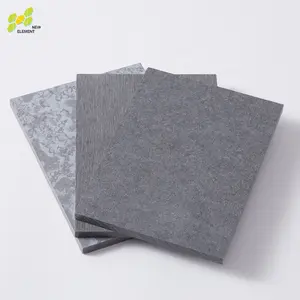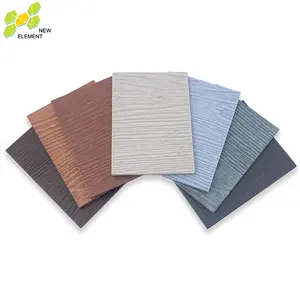Fiber Cement Board Thickness: An Essential Guide
Fiber cement boards are a crucial component in modern construction, offering a robust and versatile solution for various applications. The thickness of fiber cement board plays a pivotal role in its functionality and suitability for different uses, from residential to commercial projects. This guide delves into the specifics of fiber cement board thickness and its implications for construction and design.
Understanding Fiber Cement Board Applications
Fiber cement boards serve as a durable backing material, particularly in areas susceptible to moisture. The fiber cement board thickness for wall installations and fiber cement board thickness for ceiling applications are selected based on the demands of the environment and the specific requirements of the project. These boards are a preferred choice over gypsum due to their water-resistant properties, significantly reducing the risk of mold development and water damage.
Types and Sizes of Fiber Cement Boards
The market offers a variety of fiber cement board options, including 6mm fibre cement sheet sizes and 12 mm thick fibre cement board, catering to different structural and aesthetic needs. The compressed fibre cement sheet thickness is chosen based on the level of impact resistance required and the type of finish desired. For exterior applications, such as siding, hardie siding thickness is a critical consideration for ensuring longevity and maintaining the structural integrity of the facade.
Features and Advantages of Optimal Thickness
Selecting the appropriate fibre cement cladding thickness is essential for ensuring durability and ease of maintenance. The right thickness ensures that the boards can withstand environmental stressors while providing a stable substrate for tiles or other finishes. Moreover, the fiber cement panel thickness contributes to the thermal insulation and soundproofing qualities of the boards, enhancing the comfort and efficiency of the living space.
Materials and Composition
Fiber cement boards are composed of a blend of cement, cellulose fibers, and sand, creating a dense and durable material. The ficem board thickness is carefully calibrated during manufacturing to meet specific standards and performance criteria. This ensures that whether it's for a ficem board thickness for ceiling or for siding, the material provides a reliable, long-lasting solution for construction needs.
Choosing the Right Fiber Cement Board Thickness
When selecting fiber cement boards, it's important to consider the specific requirements of the project. Factors such as exposure to elements, structural demands, and the type of finish being applied all influence the decision. For instance, fibre cement thickness for interior use may differ from that required for exterior applications. It's essential to assess the needs of each project to determine the most suitable cement fibre board thickness.
In conclusion, the selection of fiber cement board thickness is a critical decision in the construction process, impacting the durability, functionality, and aesthetic outcome of a project. By understanding the various applications and advantages of different thicknesses, professionals can make informed choices to meet the specific needs of their construction projects.











































 浙公网安备 33010002000092号
浙公网安备 33010002000092号 浙B2-20120091-4
浙B2-20120091-4